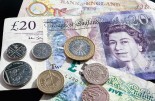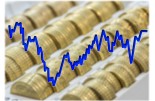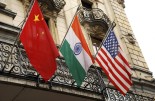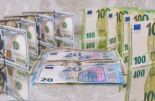Swissquote: China’s surprise cut won’t be enough
Swissquote: China’s surprise cut won’t be enough

China surprised by cutting its one-year medium-term lending facility (MLF) rates by 15bp to 2.50% today to give a jolt to its economy that has not only completely missed the expectation of a great post-Covid recovery, but that deals with deepening property crisis, morose consumer, and investor sentiment – which is worsened by Country Garden crisis and missed payments from the finance giant Zhongzhi Enterprises.
Data-wise, things looked as worrying as we expected them to look when China released its latest set of economic data today. Growth in industrial production unexpectedly dipped to 3.7%, retail sales unexpectedly fell to 2.5%, unemployment worsened, while growth in fixed investments dropped further.
Foreign investment in China fell to the lowest levels since 1998, and the 13F filings showed that Big Short’s Michael Burry already exited Alibaba and JD.com, just months after increasing his exposure to these Chinese tech giants. People’s Bank of China’s (PBoC) surprise rate cut will hardly reverse appetite for Chinese investments as meaningful fiscal stimulus becomes necessary to stop halting.
The Hang Seng remains under pressure, the Chinese yuan fell to the lowest levels against the US dollar since last November, before the post-Covid reopening, and crude oil stagnates around the $82.50pb, close to where it was yesterday morning at around the same time.
Tight supply and warnings of increased risk to shipping near the Strait of Hormuz, which is a strategic waterway for oil transit for exporters like Saudi Arabia and Iraq, certainly helped tempering the China-related selloff. But the demand side is weakening and that could stall the oil rally at the actual levels, forcing a return of the barrel of US crude toward the $80pb level, as worries regarding the Chinese recovery are real, and China will have to deploy further stimulus measures to fix things and bring investors back on their side of the table. If that’s the case however, oil prices could take a lift.
Elsewhere, Argentina devaluated its currency by 18% to 350 per dollar and hiked its interest rates by 21 percentage points to 118% after populist Javier Milei won the presidential primary, while the dollar ruble traded past the 100 mark for the first time since Russia invaded Ukraine and the Indian rupee traded near record, as well.
So all that helped the US dollar index shortly trade above its 200-DMA yesterday, a day before the release of the FOMC minutes which could hint that most Federal Reserve officials were certainly happy with the progress on inflation, but not yet convinced that the war against inflation is won just yet. And given the rebound in global energy and food prices, the Fed officials’ careful approach to inflation looks like it makes sense.
That’s certainly why the US 2-year yield continued its advance toward the 5% mark yesterday, even though the latest survey from New York Fed showed that inflation expectations recorded a sharp drop to 3.6% for the next twelve months and fell to 2.9% for the next three years. The same survey showed that the mean unemployment expectation fell by 1 percentage point, giving support to goldilocks or to the soft landing scenario. Goldman now expects the Fed to cut rates in the Q2 of next year. It also said it expects core PCE to have fallen below 3% by that time.
Today, investors will focus on the US Empire manufacturing index and the retail sales data, and earnings from Home Depot will also hit the wire. While expectation for Empire manufacturing points at a negative number, consensus for July retail sales is a slight acceleration on a monthly basis. Any improvement on the US data is poised to further back the pricing of soft landing and give a further boost to both the US dollar and the US stocks.
The S&P500 recovered yesterday, as Nasdaq 100 advanced more than 1% with technology stocks leading the rebound. Nvidia was one of the best performers with a 7% jump after a Morgan Stanley analyst reiterated his $500 per share price target yesterday. But Tesla didn’t benefit from the tech rally of yesterday and closed the session below $240 per share after cutting its car prices in China, yet again.










